Latest News
December 1, 2013
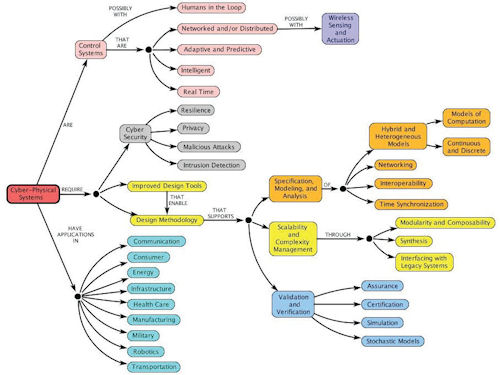 Fig. 1: The CPS concept map embraces control systems, cyber security and advanced design methodologies, including validation and verification. Image courtesy of CyberPhysicalSystems.org. |
Differentiating themselves from previous design approaches, CPS designs are coordinated, distributed and connected. Their goals include the ability to far exceed the systems of today in capability, adaptability, resiliency, safety, security and usability. The key to their success is connectivity between the cyber-world of computing and communications with the physical world.
Potential application areas for CPS include a smart electric grid, smart transportation, smart buildings, smart medical technologies, and essentially any of the smart-prefixed, next-generation physical systems—including smart manufacturing and smart factories. (See Fig. 1.)
Industry 4.0
Smarter factories with increased automation that include intelligent monitoring and autonomous decision-making processes will require new business models. Recognizing that the areas of production and logistics are prime candidates for optimization, Industry 4.0 was conceived in 2011 as a forward-looking project under the Germany government’s “High-Tech Strategy” initiative. A Working Group was initiated later that year to draft comprehensive strategic recommendations for implementing Industry 4.0, which is based on the use of cyber-physical systems to accomplish its goals.
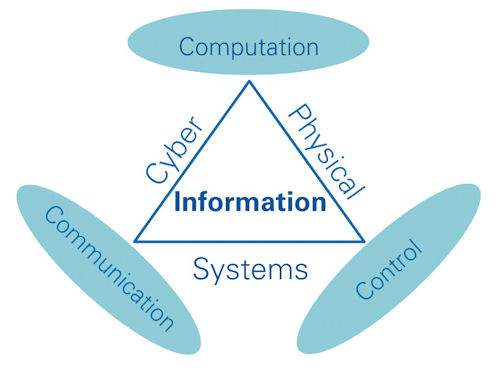 Fig. 2: A concise view of CPS shows three Cs for ubiquitous More Information. Image courtesy of National Instruments. |
In his keynote presentation at NIWeek 2013 in August, James Truchard, Ph.D., president, CEO and co-founder of National Instruments, discussed CPS, Industry 4.0 and the transformation of tools. He provided greater insight into CPS’ impact on the design process in an exclusive interview with DE.
Truchard acknowledges the continuous nature of improved design methodologies, and the relationship of CPS to well-accepted approaches such as mechatronics, model-based design and other recent design methodologies.
“Every now and then, another piece of the puzzle comes together,” he says. “When you step back a few steps and look at the whole process, things have just changed.”
National Instruments recognized the value of CPS more than seven years ago. The iPhone, for example, shows how the right graphical user interface (GUI), several sensing technologies and the resulting measurements can significantly change consumer products. Truchard says he sees the same thing occurring in industrial systems for large-scale physical problems.
“For the first time in history, you can have advanced measurements in the same platform you have advanced control,” he explains. “That’s one aspect of the whole. Then you have this ubiquitous capability that combines measurements—it combines control, it combines advanced analysis—all being done in real-time, with the ability to interface the computing world to the physical world.”
In fact, machine-to-machine (M2M) communications and control, the IoT, cloud computing and just about everything “smart” can all fall under the CPS design umbrella, he points out.
“And there is one more sort of consolidating perspective on it, and that’s the ubiquitous nature of More Information or data being converted into More Information, top to bottom in the decision process,” adds Truchard. (See Fig. 2.)
Because of CPS, Truchard notes, people are using data in ways that were not previously imagined. One example is the Dresden light rail system in Germany. With seven years of data collection and consolidation, researchers at the university published 19 papers demonstrating several ideas they were able to implement to improve the efficiency of the system, from effective use of electricity to vehicle maintenance.
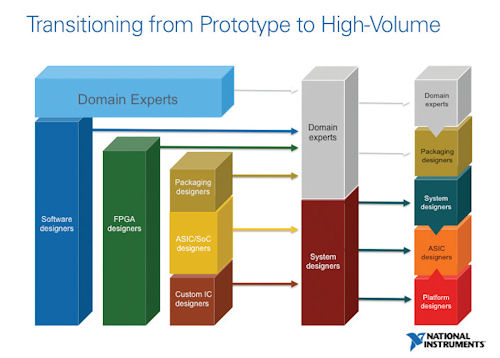 Fig. 3: Transitioning from prototype to high volume. Image courtesy of National Instruments. |
“Another piece of the puzzle is what we call ‘big analog data,’” says Truchard. “You have this data that is a variable—accessible across the network, across the activities and whatever dimension you want to go. These things on their own are isolated facts, but when you pull them together in an aggregated way, they change your ability to understand use-related More Information.”
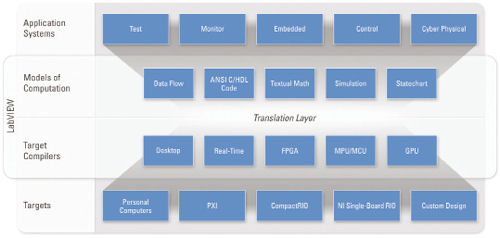 Fig. 4: National Instruments’ LabVIEW and other hardware provide solutions for different application systems, including CPS. Image courtesy of National Instruments. |
With CPS in mind, NI has implemented advancements in its tools and software to provide a unified platform for designing, prototyping and deploying applications. Graphical system design allows designers to integrate real-world signals sooner in the design process, for earlier error detection and reuse code for maximum efficiency. By taking advantage of the latest advances in computing technology, this approach can optimize system performance more quickly than traditional design methodologies, Truchard says. (See Fig. 3.)
“What makes that possible for us is we combine the processing, distributed processing and the ]field-programmable gate array] FPGA that lets us go the last mile for the high speed that’s needed in some cases, so it becomes a software problem in that space,” he continues. While sensor integration is still a physical system problem, he says, other design aspects would become a software problem where re-use of work plays a critical role. (See Fig. 4.)
Additional Tools
Other companies have recognized the importance of CPS thinking, but may not use that terminology. Zuken, a software and services company, has tackled design complexity system cost reduction with E3.eCheck. As part of its E3 series of electrical and fluid CAD software, E3.eCheck identifies errors at the development stage. Running in real-time, the software automatically ensures the functional accuracy of a schematic and verifies that wires and fuses are within acceptable tolerances.
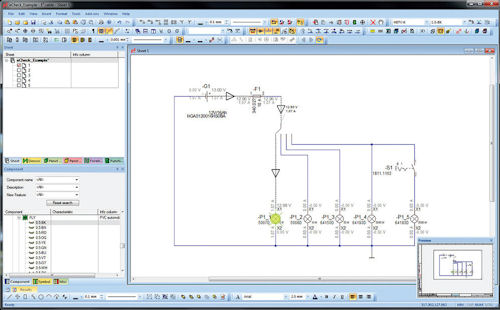 Fig. 5: E3.eCheck provides a circuit test showing an active lamp, current flow, voltage and current. Image courtesy of Zuken. |
“E3.eCheck represents an advancement in the tools available for electrical engineering of harnesses and control systems,” says Steve Chidester, head of international marketing at Zuken. “The days of prototyping and then documenting afterward are on their way out. Today, it is important to engineer products from concept through manufacturing. E3.eCheck not only makes design analysis faster and more accurate, but it also identifies design flaws early—saving time and cost by eliminating prototype iterations.” (See Fig. 5.)
Evolving Design Methodology
While many of the enhanced capabilities from CPS are reality, some of the pieces are still falling into place. “There are some components that depend on some new standards that are coming out,” says Truchard. “One is ]Practical Software and Systems Measurement, or PSM] time-synchronized networks, for example, that we’re active in committee form, driving the components that are needed to make this happen.”
The time-synchronized aspect is required to take CPS to the next level. One of the primary goals of the PSM project is to transition the issue-drive measurement process into everyday practice. With its role in measurement technology, NI has interest in both of these areas.
To deliver on the vision of cyber-physical systems, NI is involved in driving the standards and developing tools needed so that users can implement the latest technologies. Truchard says he also wants to educate and prepare designers for the future of engineering.
“You have all these things that are combining, and the key is to be a player, to be a part of that ecosystem in a way that your More Information and your ]technology]—in our case, measurements and systems that are being built with our technology—can integrate into this bigger picture with things like the cloud included,” he concludes.
Randy Frank is a contributor to DE. Send e-mail about this article to [email protected]
More Info
Subscribe to our FREE magazine, FREE email newsletters or both!
Latest News
About the Author
Randy FrankRandy Frank is a freelance technology writer based in Arizona. Contact him via [email protected].
Follow DE




